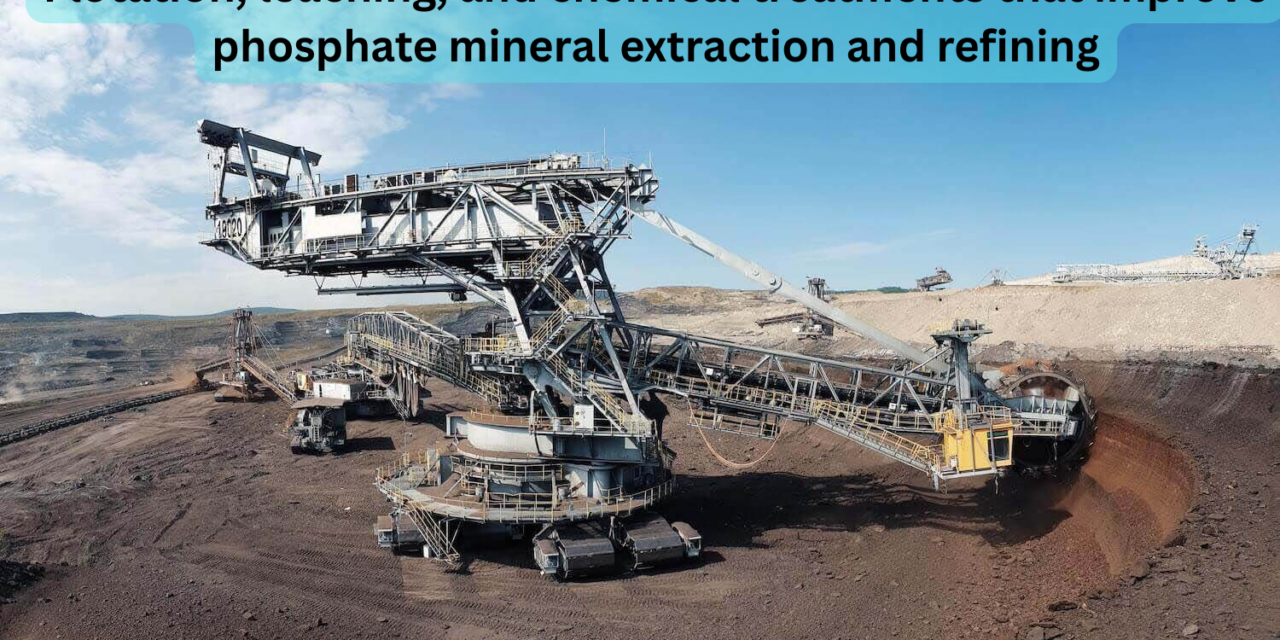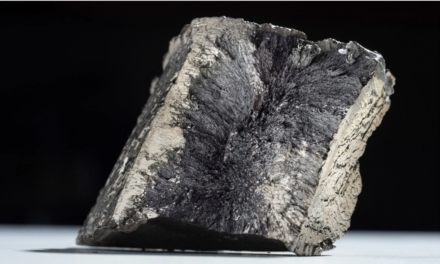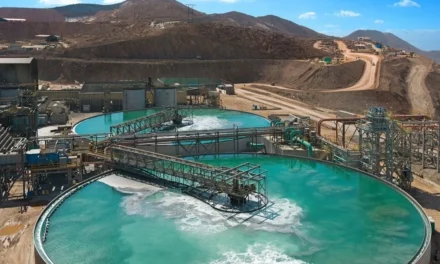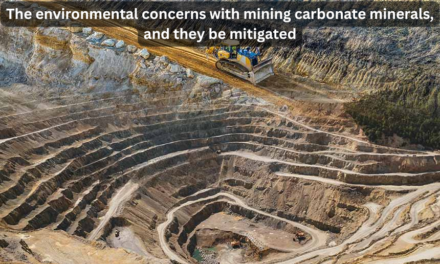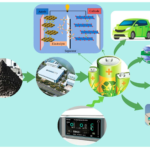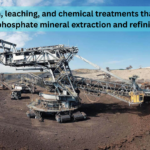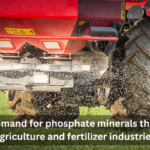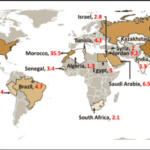Flotation, leaching, and chemical treatments are crucial techniques in the extraction and refining of phosphate minerals. Each method plays a distinct role in improving the quality and purity of phosphate products, and they are often used in combination to achieve optimal results. Let’s explore how these methods contribute to phosphate extraction and refining.
1. Flotation
Flotation is one of the most widely used methods for separating phosphate minerals (e.g., apatite) from gangue minerals (e.g., silica, clay, and carbonate minerals) during the beneficiation process. It helps concentrate the phosphate ore, making it more suitable for subsequent processing into fertilizers or phosphoric acid.
How Flotation Improves Phosphate Extraction:
- Selective Separation: Flotation uses the difference in surface properties between phosphate minerals and gangue minerals. By adding reagents (such as collectors, frothers, and modifiers), phosphate minerals selectively adhere to air bubbles and float to the surface, while gangue minerals remain in the slurry and are discarded.
- Increased Purity: Flotation helps produce high-grade concentrates with a higher proportion of phosphate minerals and lower amounts of impurities like silica, clay, and carbonate, which can hinder subsequent processing.
- Improved Yield: The efficient separation of valuable phosphate minerals from waste materials increases the overall yield of phosphate concentrate per ton of ore, reducing the amount of low-grade ore that needs to be processed.
Key Benefits of Flotation:
- High Selectivity: It is highly effective in separating fine-grained phosphate from unwanted minerals, especially when the minerals are finely disseminated.
- Adaptability: Can be tailored for different types of ores with various gangue minerals.
- Low Cost: Relatively low-cost method for the large-scale extraction of phosphate, especially in ore bodies with complex gangue.
2. Leaching
Leaching is a chemical process used to dissolve and remove impurities from phosphate ore, particularly calcium-based gangue minerals such as calcite, dolomite, and gypsum, or to recover phosphate in a purified form.
How Leaching Improves Phosphate Extraction:
- Removal of Impurities: Acid leaching uses acidic solutions (often sulfuric acid or hydrochloric acid) to dissolve calcium and magnesium minerals (such as calcite or dolomite) from the ore, leaving the phosphate minerals relatively unaffected. This is especially important when dealing with ores that contain significant amounts of carbonate minerals, which can affect the quality of the final product.
- Enhanced Phosphoric Acid Production: After the leaching process, the treated phosphate ore can be processed to produce phosphoric acid, a critical component for making fertilizers like DAP (Diammonium Phosphate) and MAP (Monoammonium Phosphate).
- Selective Leaching: By adjusting the concentration of the leaching agent and the processing conditions (e.g., temperature, time), it is possible to selectively remove impurities while retaining the phosphate minerals, thus improving the purity of the final concentrate.
Key Benefits of Leaching:
- Purification: Leaching is particularly useful in ores that contain high amounts of gangue minerals, such as calcite or dolomite, which must be removed to achieve higher-quality phosphate concentrates.
- Environmental Considerations: While leaching involves the use of acids, it can be done in controlled environments to minimize the environmental impact (e.g., through neutralization of the acid).
- Flexibility: Leaching can be used on different types of phosphate ores, including those containing carbonate, silicate, or fluoride minerals.
3. Chemical Treatments
Chemical treatments are widely used in the refining of phosphate concentrates, particularly in the production of phosphoric acid or phosphate fertilizers. These treatments are designed to purify and convert raw phosphate rock into a usable form for industrial applications.
How Chemical Treatments Improve Phosphate Refining:
- Sulfuric Acid Treatment: One of the most common chemical treatments used to refine phosphate rock is the treatment of phosphate rock with sulfuric acid to produce phosphoric acid and gypsum. This reaction is known as the wet process.
- Reaction: Ca5(PO4)3F+5H2SO4→5CaSO4+4H3PO4+2HF\text{Ca}_5(\text{PO}_4)_3\text{F} + 5\text{H}_2\text{SO}_4 \rightarrow 5\text{CaSO}_4 + 4\text{H}_3\text{PO}_4 + 2\text{HF}Ca5(PO4)3F+5H2SO4→5CaSO4+4H3PO4+2HF This treatment is used primarily to produce phosphoric acid, a key precursor for the production of DAP, MAP, and other phosphate-based fertilizers.
- Purification: After the sulfuric acid treatment, the gypsum byproduct is separated from the phosphoric acid through filtration or settling, leaving behind a purified form of phosphoric acid.
- Fluorine Removal: Some phosphate ores contain fluorine compounds, which can be detrimental during refining or cause environmental issues. Chemical treatments involving lime or alkalization can be used to neutralize and remove fluoride ions from the phosphoric acid or phosphate rock.
- Conversion of Phosphate Minerals: Chemical treatments can also be used to convert less soluble phosphate minerals (such as apatite) into water-soluble forms. This is essential for making fertilizers that release phosphorus to plants efficiently.
Key Benefits of Chemical Treatments:
- Efficient Phosphoric Acid Production: The reaction of phosphate rock with sulfuric acid is a well-established method for producing high-quality phosphoric acid, which is used to make a variety of phosphate fertilizers.
- Impurity Removal: Chemical treatments can help remove impurities like fluoride, magnesium, and calcium compounds, ensuring a high-purity final product that meets industry standards.
- Improved Fertilizer Quality: By refining the phosphate rock through chemical treatments, manufacturers can produce fertilizers with optimized nutrient content, such as MAP and DAP, that are more effective for plant growth.
How These Techniques Work Together
- Flotation is typically used in the early stages of beneficiation to concentrate the phosphate ore by removing waste minerals like silica and clay. The high-grade phosphate concentrate produced can then undergo further chemical treatments.
- Leaching can be applied to remove calcite, dolomite, and other gangue minerals, improving the purity of the concentrate. Leaching can be particularly useful when the phosphate rock contains large amounts of carbonate minerals, which are problematic during downstream processing.
- Chemical treatments, particularly acid treatment, are applied to the concentrated or leached phosphate ore to produce phosphoric acid, which is a crucial intermediate for manufacturing phosphate fertilizers. These treatments also help refine the final product by removing harmful impurities like fluoride or excess calcium.
Together, these techniques help maximize the recovery of phosphate minerals, improve the quality of the concentrate, and facilitate the production of high-value products like phosphoric acid and phosphate fertilizers.
Conclusion
Flotation, leaching, and chemical treatments are essential techniques in the extraction and refining of phosphate minerals. Flotation helps separate phosphate minerals from gangue, improving concentrate quality. Leaching removes impurities, especially carbonate minerals, while chemical treatments are used to produce phosphoric acid and refine phosphate products for fertilizer manufacturing. These methods are often used in combination to ensure high recovery rates, improved purity, and the production of high-quality phosphate-based products that are critical for global agricultural needs.
Hashtags
#PhosphateMining #MineralExtraction #FlotationTechniques #LeachingProcesses #ChemicalTreatments #PhosphateRefining #OreBeneficiation #MineralProcessing #SustainableMining #PhosphateOreProcessing #MineralSeparation #PhosphateRecovery #OreFlotation #LeachingTechniques #ChemicalExtraction #PhosphateRefiningTech #PhosphateConcentration #MineralProcessingTech #PhosphateBeneficiation #EfficientExtraction

